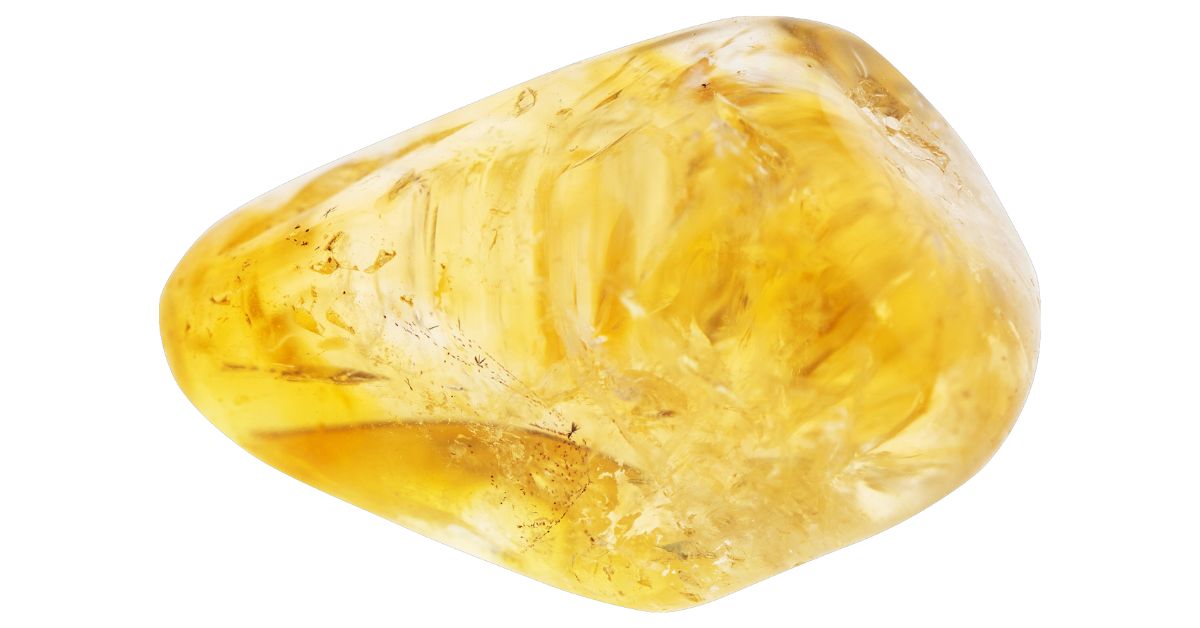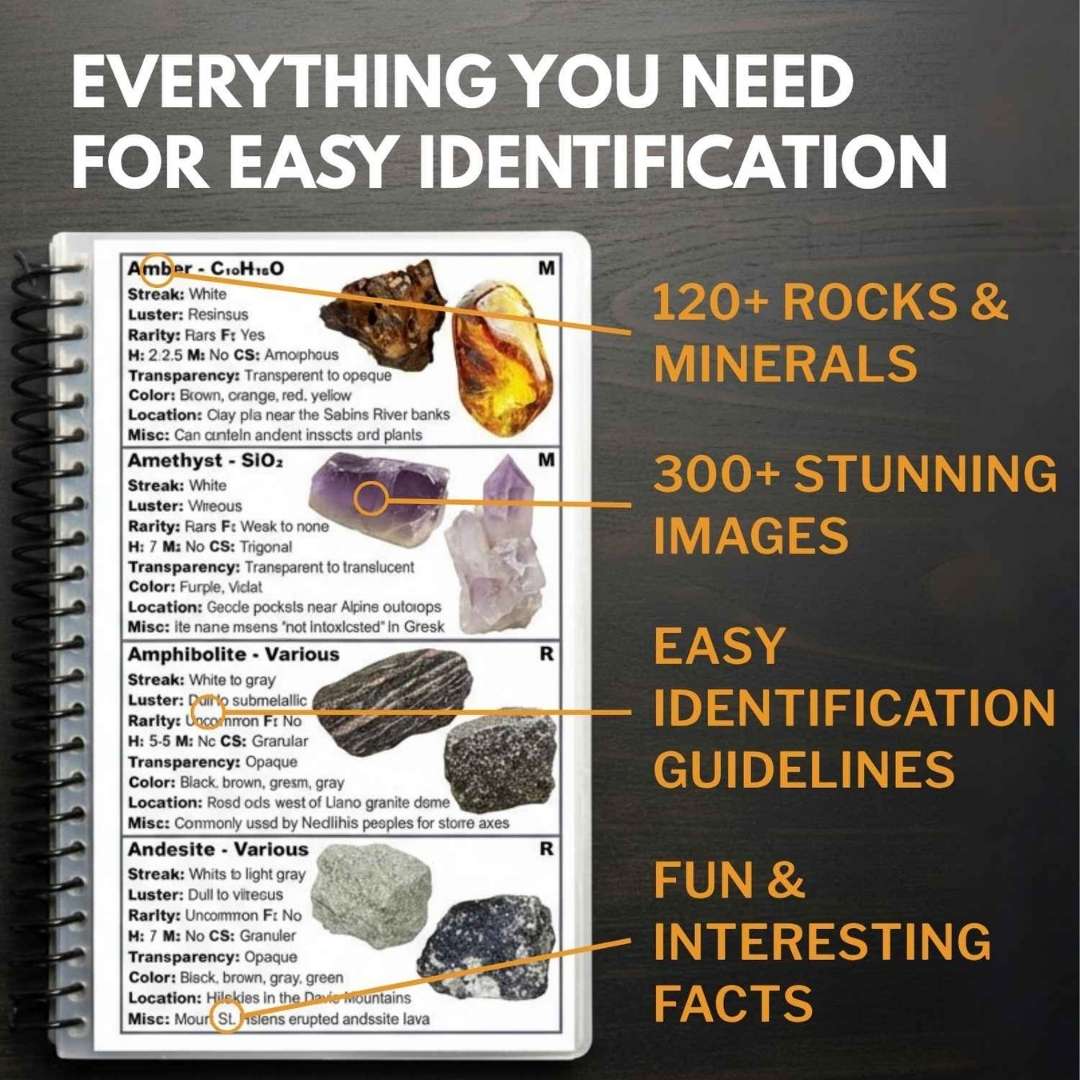Citrine is a rare find in Texas, but with a little guidance, you can uncover this golden gemstone. The search can be tricky, but that’s part of the fun for anyone who loves exploring the Lone Star State.
Hunting for citrine is an adventure that connects you to the beauty of Texas’ natural landscape. Whether you’re searching along creek beds or scouring rock fields, there’s a sense of excitement with every discovery.
While citrine isn’t as abundant as other gems in Texas, a few areas hold promise if you know where to look. With the right preparation, patience, and a bit of luck, you might just walk away with a shimmering piece of Texas treasure.
The only other tool you need is Rock Chasing’s Texas Rocks & Minerals Identification Field Guide to ensure you can identify everything you find and save tons of hours. You’ll never walk past a great crystal without realizing what you missed!
How Citrine Forms Here

Citrine typically starts its journey as regular quartz crystal, but here’s the cool part – it gets its sunny yellow color through heat and radiation.
Most natural citrine forms when amethyst or smoky quartz gets heated by underground magma or other geological processes. The heat changes the iron impurities inside the crystal, transforming them from purple or gray to golden yellow.
This usually happens at temperatures between 470-560°C (878-1040°F). The amount of iron and the exact temperature determine how deep the yellow color becomes.
Most citrine we see in stores is actually heat-treated amethyst because natural citrine is pretty rare.
Types of Citrine
Citrine comes in a variety of shades, mostly categorized by its natural or heat-treated origin. This classification helps identify the characteristics and quality of each citrine specimen.
Yellow Citrine
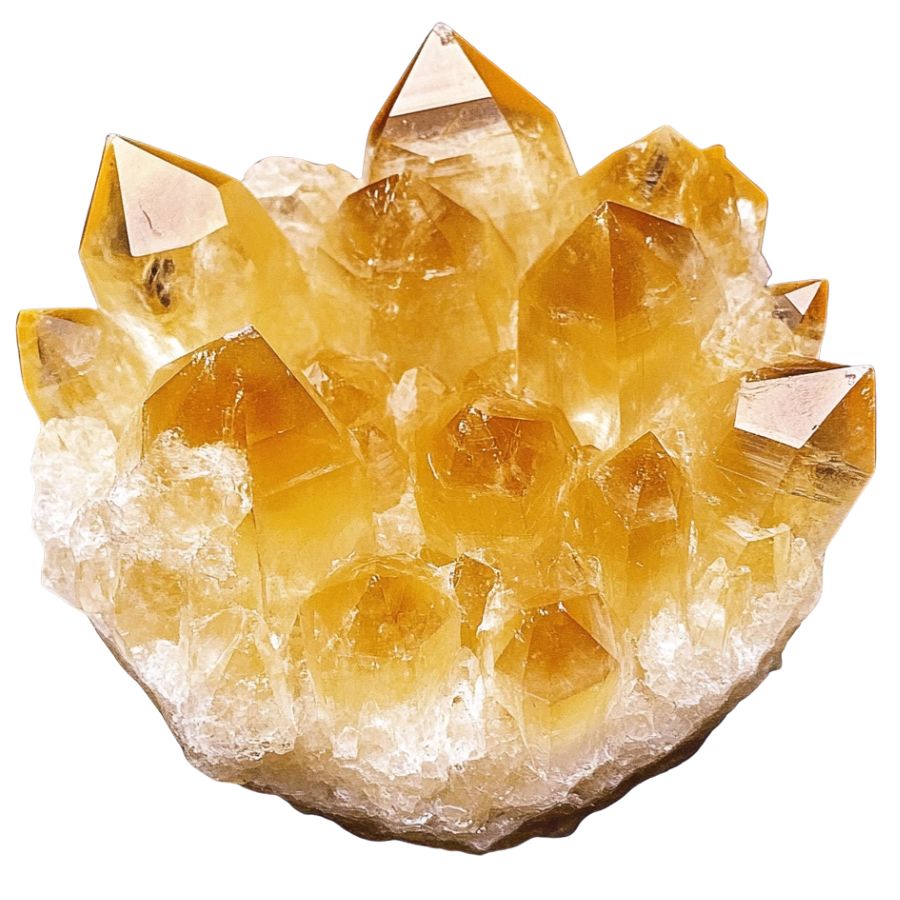
Yellow citrine displays a warm, sunny color ranging from pale yellow to deep golden. The most desired pieces show pure yellow tones without any brown undertones.
Natural yellow citrine gets its color from iron traces in its crystal structure, creating a softer and more subtle yellow compared to heat-treated stones.
The stone often exhibits excellent transparency and clarity, making it sparkle brilliantly in light. Most yellow citrine available today comes from heat-treated amethyst or smoky quartz, as natural specimens are quite rare. The heating process transforms the original purple or grey color into various yellow shades.
When examined closely, yellow citrine might show interesting internal features like liquid inclusions or tiny rainbow-like effects. These natural characteristics help gemologists identify untreated stones from heat-treated ones.
Each crystal typically forms with consistent coloring throughout, though some pieces may show subtle color zoning. This even distribution of color makes yellow citrine particularly attractive when cut into larger stones.
If you want REAL results finding incredible rocks and minerals in Texas you need one of these 👇👇👇
Finding the coolest rocks in Texas isn’t luck, it's knowing what to look for. Thousands of your fellow rock hunters are already carrying Rock Chasing field guides. Maybe it's time you joined the community.
Lightweight, mud-proof, and packed with clear photos, it’s become the go-to tool for anyone interested discovering what’s hidden under our red dirt.
Join them, and make your next rockhounding trip actually pay off.
📘 Order the Texas Field Guide Now →
What makes it different:
🚙 Field-tested across Texas rivers, ranchlands, and roadcuts.
📘 Heavy duty laminated pages resist dust, sweat, and water.
🧠 Zero fluff — just clear visuals and straight-to-the-point info.
📍 Find hidden gems like Blue Topaz, Texas agate, and petrified wood fast.
⭐ Rated 4.8★ by real collectors who actually use it in the field.
Lemon Citrine
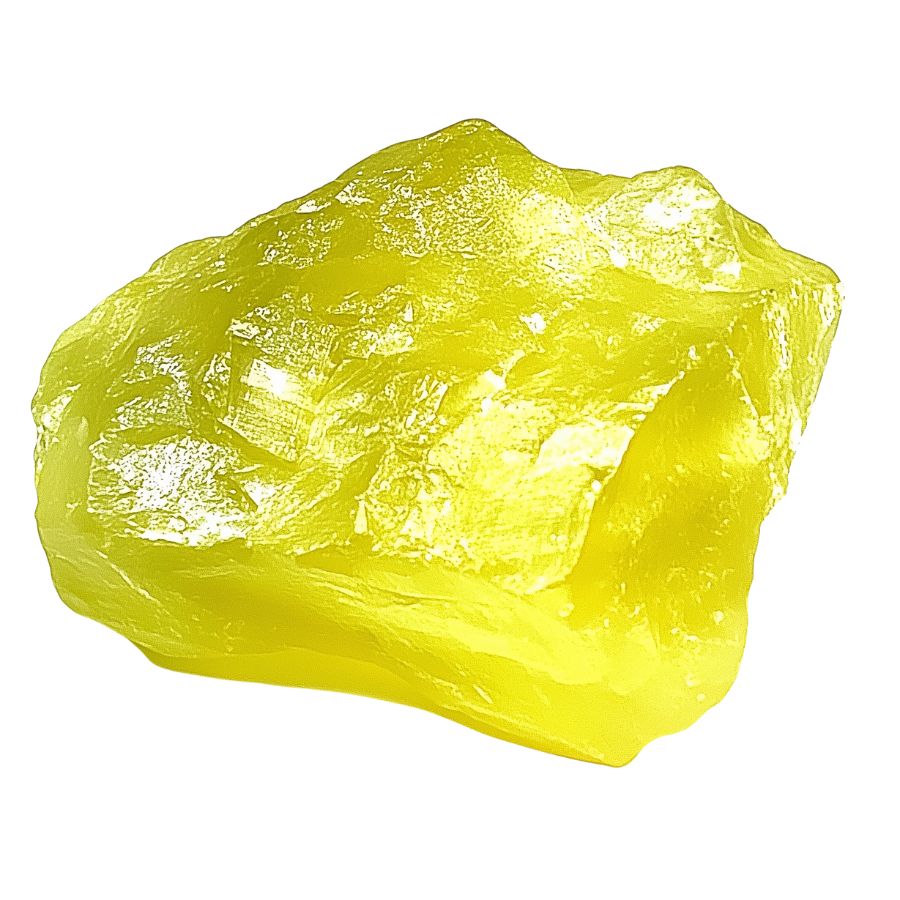
Lemon citrine showcases a bright, zesty yellow color that truly resembles fresh lemon peel. Its color is more vivid and lighter than other citrine varieties, making it instantly recognizable.
The stone appears particularly brilliant under natural light, where its true lemony brightness comes alive. The crystal structure allows light to pass through smoothly, creating a glass-like appearance that enhances its natural brightness.
Recent studies have shown that lemon citrine’s unique color comes from specific iron content levels in its structure. This precise chemical composition creates the distinctive lemon-yellow shade that sets it apart from other yellow gemstones.
The stone’s surface has a sleek, polished appearance that makes it appear almost wet or glossy. This natural shine, combined with its bright color, creates an eye-catching display that draws attention immediately.
Orange Citrine
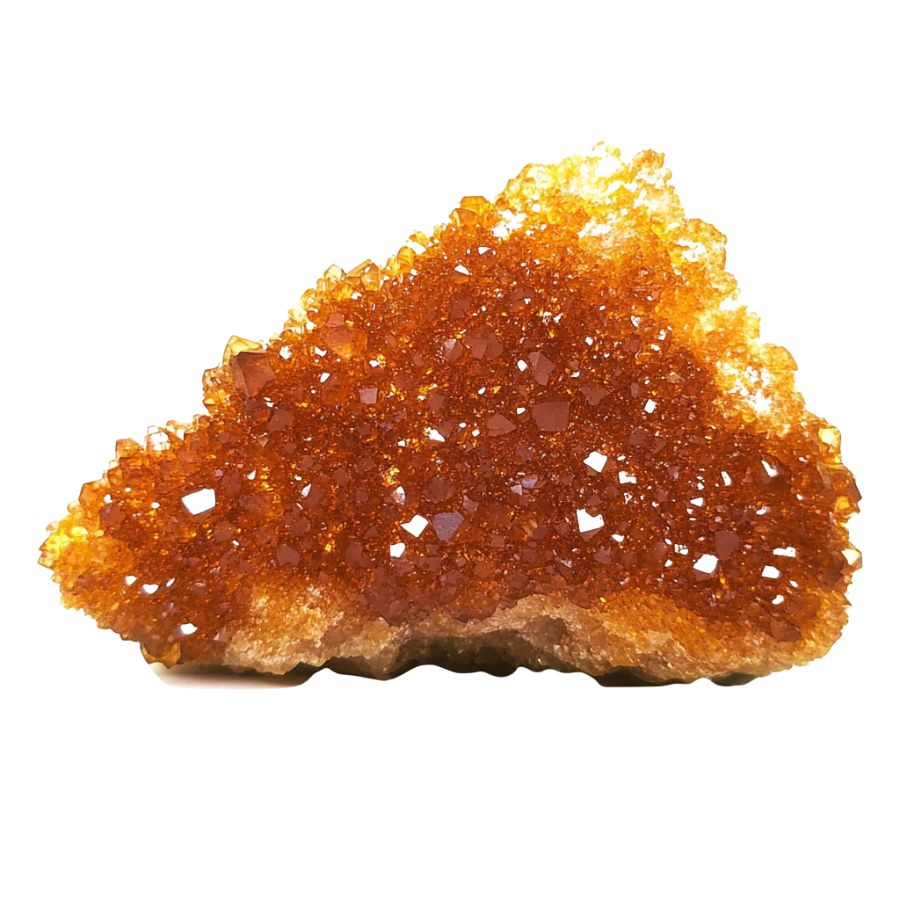
Orange citrine exhibits rich, warm tones ranging from honey-amber to deep mandarin orange. The most valuable pieces show a pure, saturated orange color without brown undertones.
Some specimens show interesting color zoning, where different intensities of orange create natural patterns within the stone.
Many orange citrines display a phenomenon called pleochroism, where the stone shows slightly different colors when viewed from different angles. This optical effect adds depth and character to the stone’s appearance.
Scientists have found that orange citrine’s color stability is remarkably high, meaning it won’t fade over time with normal exposure to light. This makes it particularly valuable for collectors who want their specimens to maintain their vibrant appearance long-term.
Golden Citrine
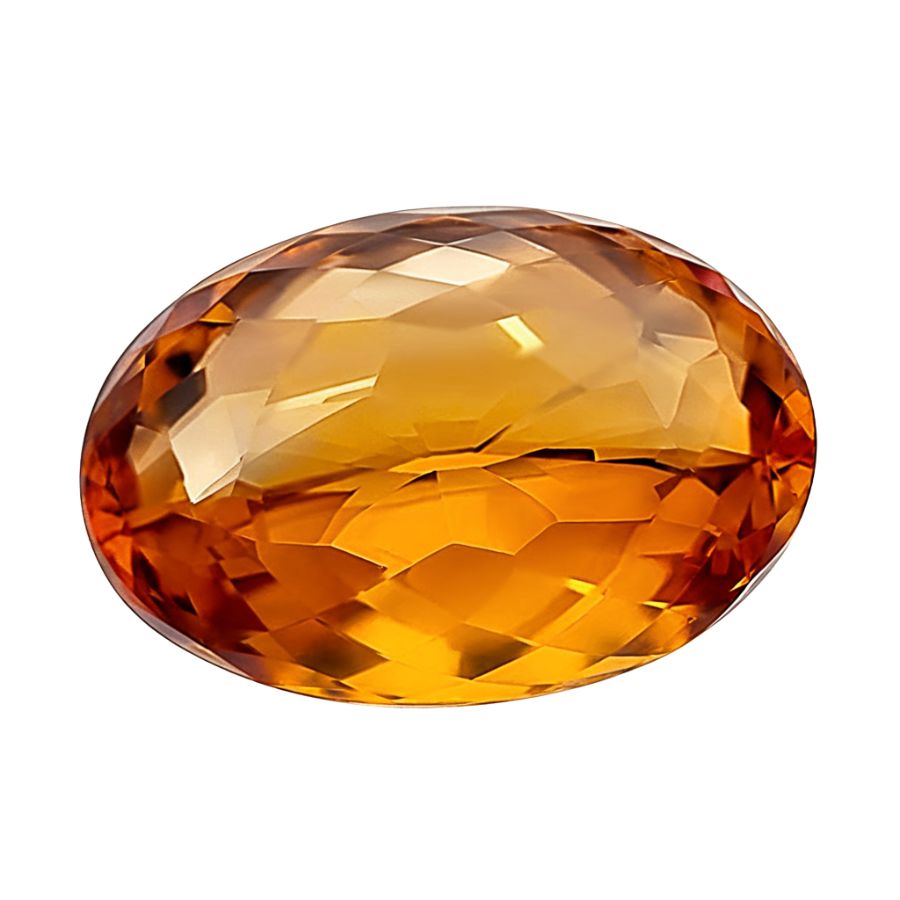
Golden citrine shows rich, warm tones reminiscent of honey or autumn sunlight. Its color ranges from champagne gold to deep amber, with the most prized specimens displaying pure golden hues without any brown tinting.
These stones often show interesting optical effects, including color zoning where different intensities of gold create natural patterns.
Some specimens display small needle-like inclusions that can create attractive silk-like patterns when viewed under proper lighting.
The stone’s internal structure often creates fascinating light effects, including subtle rainbow reflections and interesting play-of-color phenomena. Some specimens even show tiny internal prisms that create miniature rainbow effects when viewed closely.
Ametrine
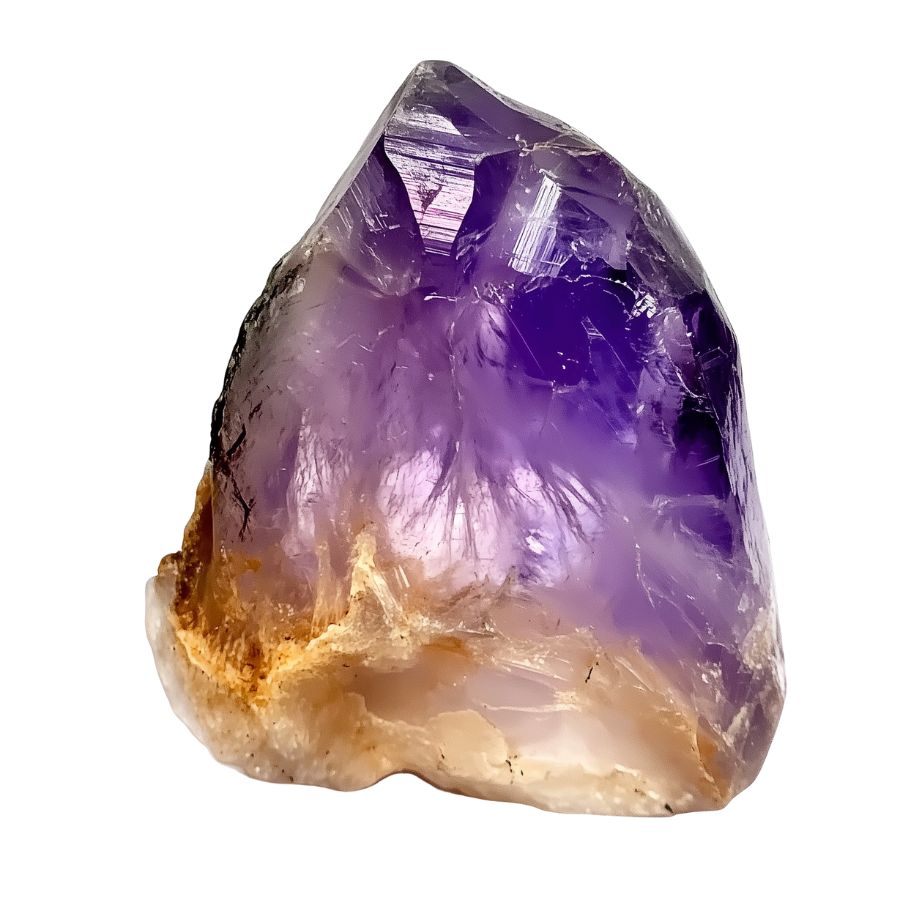
Ametrine showcases a fascinating blend of purple and golden-yellow colors in a single crystal. These colors exist in distinct zones rather than mixing together.
Temperature differences in the growing crystal caused some areas to develop purple coloring while others turned yellow. This natural process is extremely rare in gemstones.
When cut properly, ametrine can display dramatic color contrasts. Skilled stone cutters position these colors to create striking patterns. Some pieces show equal amounts of both colors, while others might have more of one shade than the other.
The colors in ametrine remain stable over time and don’t fade in sunlight. Each crystal shows slightly different patterns and color intensities, making every piece one-of-a-kind.
Madeira Citrine
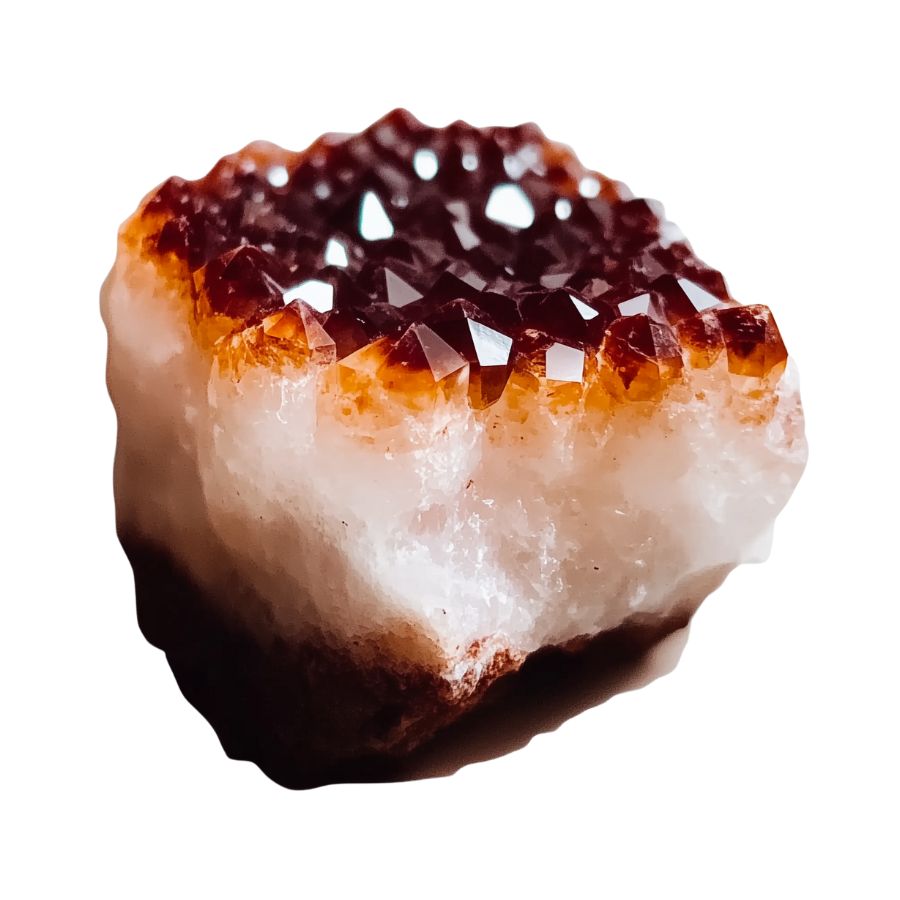
Madeira citrine displays rich, deep colors ranging from reddish-orange to brownish-red, similar to the warm tones of Madeira wine. This deep coloring sets it apart from lighter citrine varieties.
Most specimens on the market come from carefully heated amethyst, which transforms the purple color into these warm reddish tones. The heating process must be precisely controlled to achieve the desired color.
The stone often shows interesting internal features called liquid inclusions. These tiny pockets of ancient fluid got trapped as the crystal formed millions of years ago. Scientists study these inclusions to understand the conditions when the stone formed.
When examined closely, some Madeira citrine pieces display subtle color banding. These bands formed as the crystal grew in layers, creating natural patterns within the stone.
Palmeira Citrine
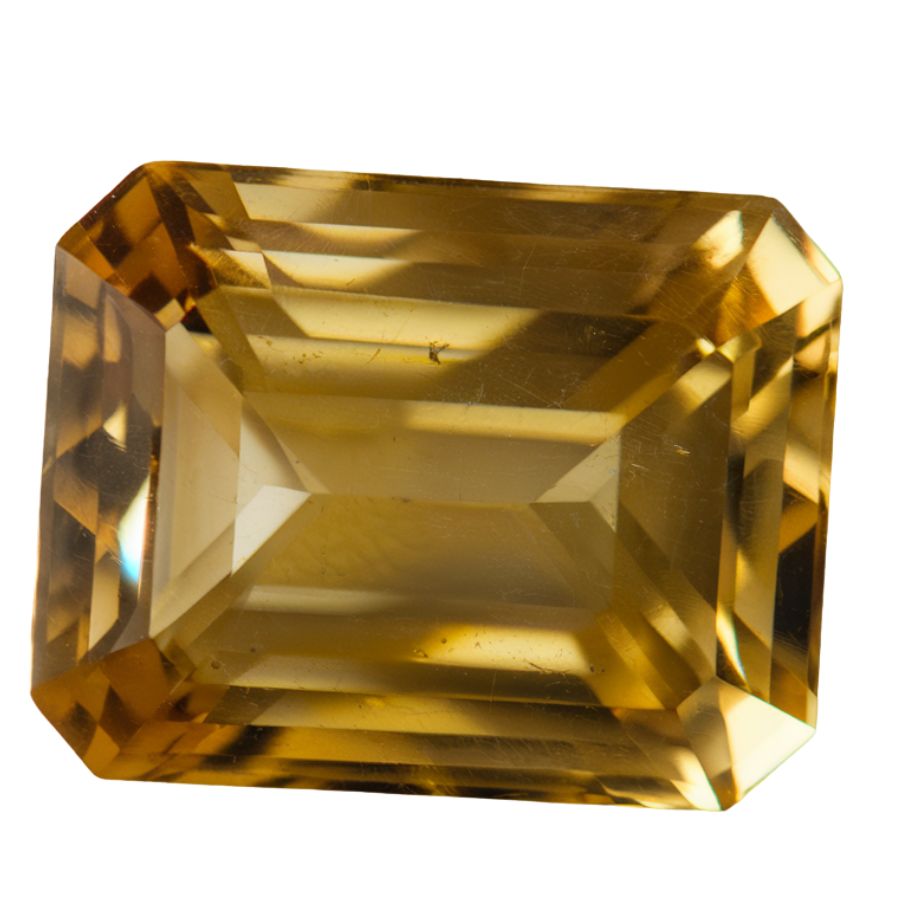
Palmeira citrine displays bright orange colors reminiscent of tropical sunsets. The color can range from light peach to intense tangerine, creating a warm, vibrant appearance.
Scientists have found that the particular shade develops under specific temperature and pressure conditions during formation. This makes natural specimens particularly rare.
Some Palmeira stones display a subtle color shift, appearing more yellow in natural light and deeper orange under artificial lighting.
The crystal structure often creates fascinating internal patterns. Some pieces contain tiny needle-like inclusions that create silvery reflections, while others might show natural growth lines that reveal how the crystal developed over time.
Rio Grande Citrine
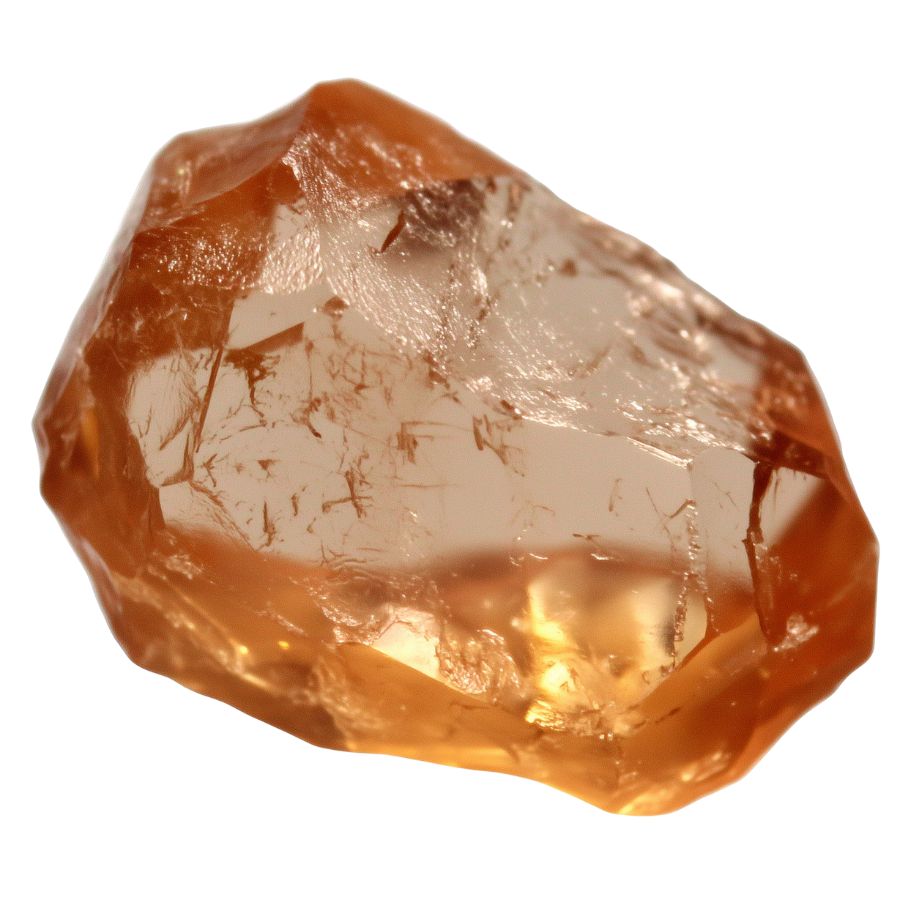
Rio Grande citrine presents a spectrum of yellow shades, from pale lemon to deep golden amber. The colors often appear more natural and softer than heat-treated stones, with subtle variations throughout the crystal.
Tiny crystals, ancient gas bubbles, and growth patterns can be found within the stone. These features help geologists understand the conditions under which the crystal formed.
The surface of Rio Grande citrine has a distinctive glossy appearance that makes light bounce off in interesting ways. When properly cut, it can show bright flashes of light called scintillation that make the stone appear to glow from within.
Some specimens display the effect where the yellow color appears to shift slightly when viewed from different angles. This subtle color play adds another dimension to the stone’s appearance.
What Rough Citrine Look Like?
Citrine crystals have unique identifying features that make them recognizable in their raw state. When searching for natural citrine, keep an eye out for these characteristics:
Check for the Distinctive Golden-Brown Color

Raw citrine has a warm, honey-like color ranging from pale yellow to deep amber-brown. Unlike heat-treated amethyst (which looks more orangey), natural rough citrine shows uneven color distribution.
Look for patches where the color seems to fade or intensify. You might spot some smoky zones too – that’s totally normal in natural pieces.
Examine the Crystal Structure
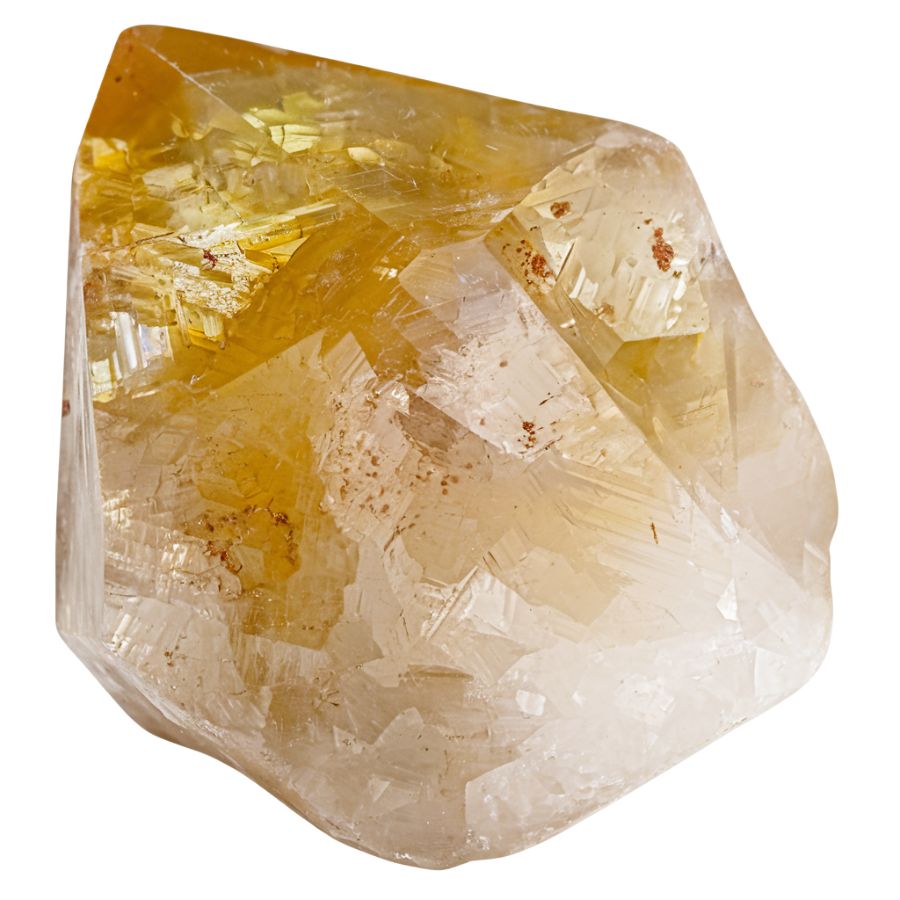
Natural rough citrine forms hexagonal crystals, often with one pointy end. The sides aren’t always perfect – look for striations (tiny parallel lines) running across the crystal faces.
Sometimes you’ll find specimens with multiple crystal points growing together, kinda like a cluster of pencil tips.
Look for the Telltale Surface Texture
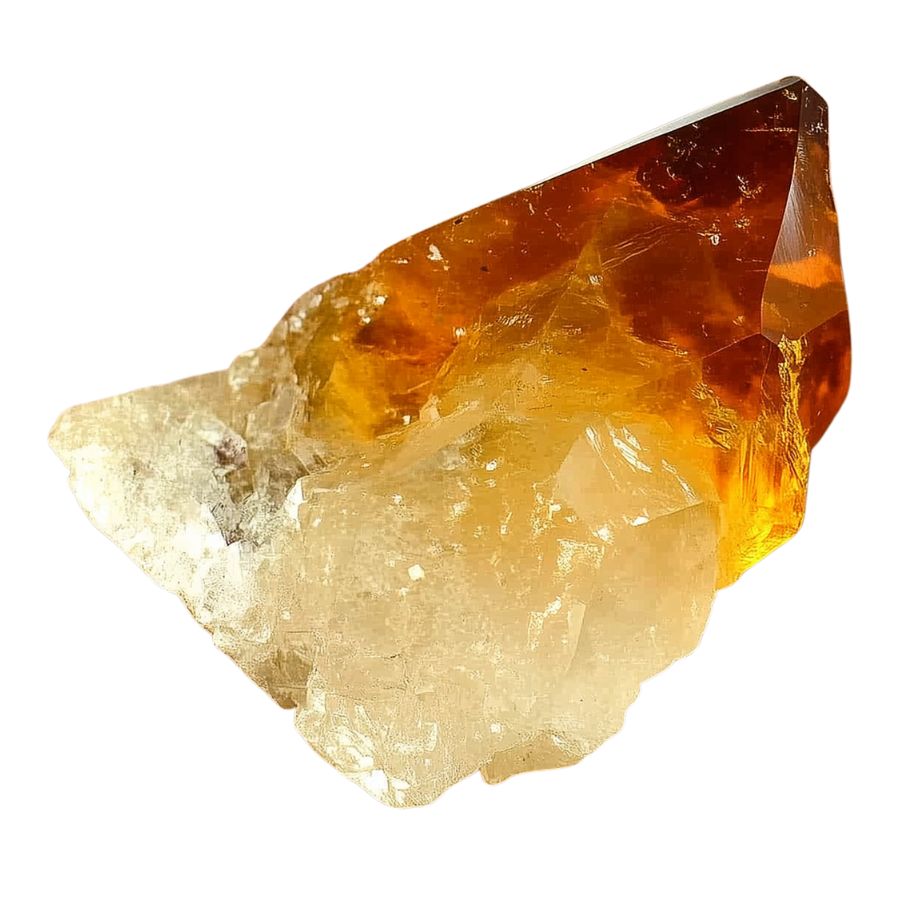
Raw citrine has a glassy surface with irregular breaks. Unlike quartz, which can be super glassy, rough citrine often has a slightly weathered look.
Run your finger over it – you should feel subtle variations. If it’s too smooth or has bubble-like inclusions, it might be glass.
Test the Hardness and Durability

Grab a steel nail or knife – citrine should resist scratching (it’s a 7 on Mohs scale). Try scratching a discreet spot. If it marks easily, you’re probably looking at calcite or another softer mineral.
Real citrine stays cool to touch longer than glass imitations, so hold it in your palm for a minute.
The Tools You Will Need
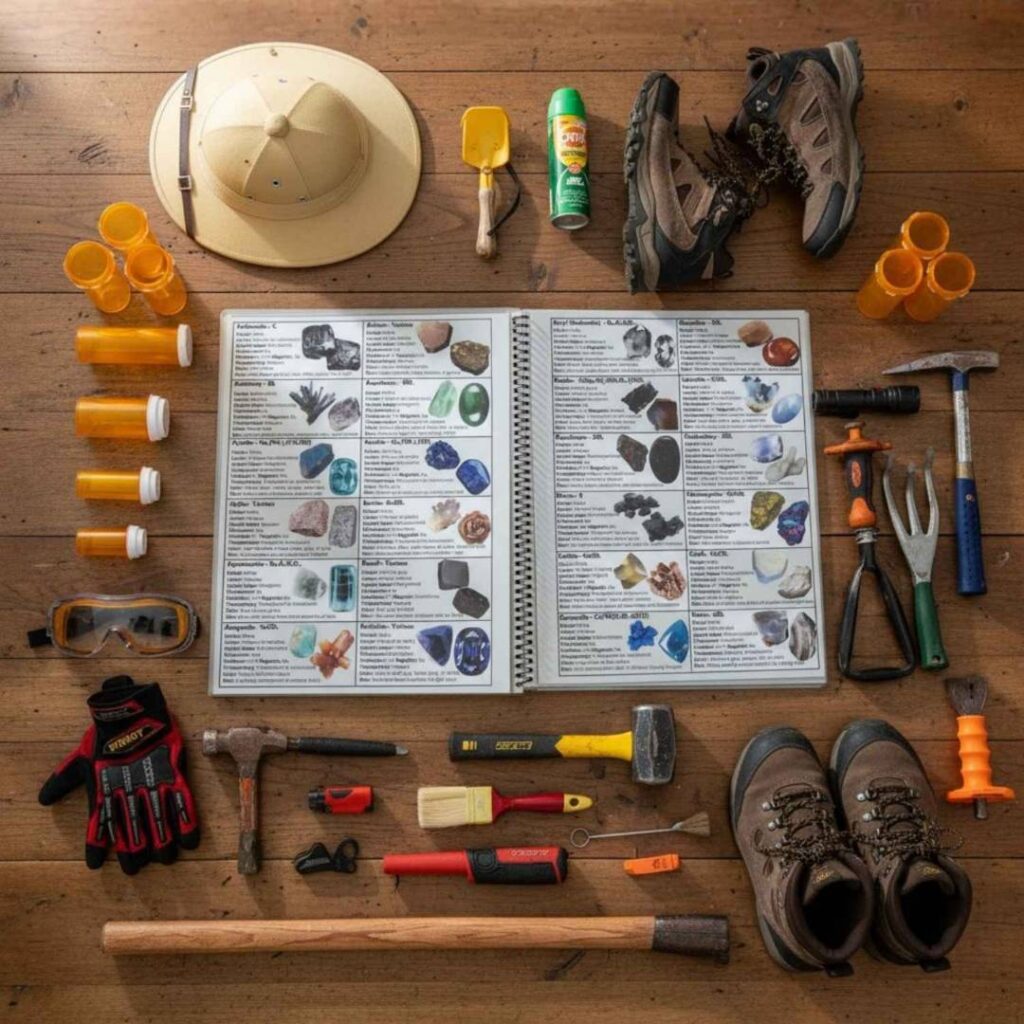
Hunting for your own citrine in Texas is an excellent way to start a mineral collection, and you do not need much gear to get started. You can hunt safely and successfully with just a few simple, inexpensive items.
A Dependable Field Identification Guide – Essential
A great field guide is the number one thing you must have before you start your citrine search. Without it, you could spend hours digging up common quartz or even shards of glass, wasting huge amounts of effort.
By carrying Rock Chasing’s Texas Rocks & Minerals Identification Field Guide, you quickly learn what raw citrine looks like in the wild.
This guide teaches you how to tell a valuable crystal from a worthless rock instantly, right where you find it.
You can see HERE why thousands of rockhounds across Texas rely on this guide.
Small Trowel or Scoop – Essential
Citrine crystals are often found in loose soil or gravel, especially around creek beds and weathered rock deposits. A small, sturdy trowel or scoop is essential for digging and moving small amounts of material while searching these areas.
Magnifying Glass – Essential
Citrine is a form of quartz, and its color can be very light or its crystals can be quite small. A magnifying glass is an essential piece of equipment because it allows you to carefully inspect small fragments for that tell-tale yellow-to-orange color.
Collection Bag or Bucket – Recommended
You need a reliable place to store the crystals and rocks you find. A durable canvas bag or a small, strong plastic bucket works perfectly for hauling your treasures out of the field.
Gloves – Optional
When searching creek beds and gravel for citrine, you will be constantly digging and moving sharp rocks, which can quickly tear up your hands. A sturdy pair of work gloves or gardening gloves is an optional piece of gear that is highly recommended.
Tips on Where to Look
Citrine can be found in several accessible locations. Here’s where you should start looking:
Mining Sites
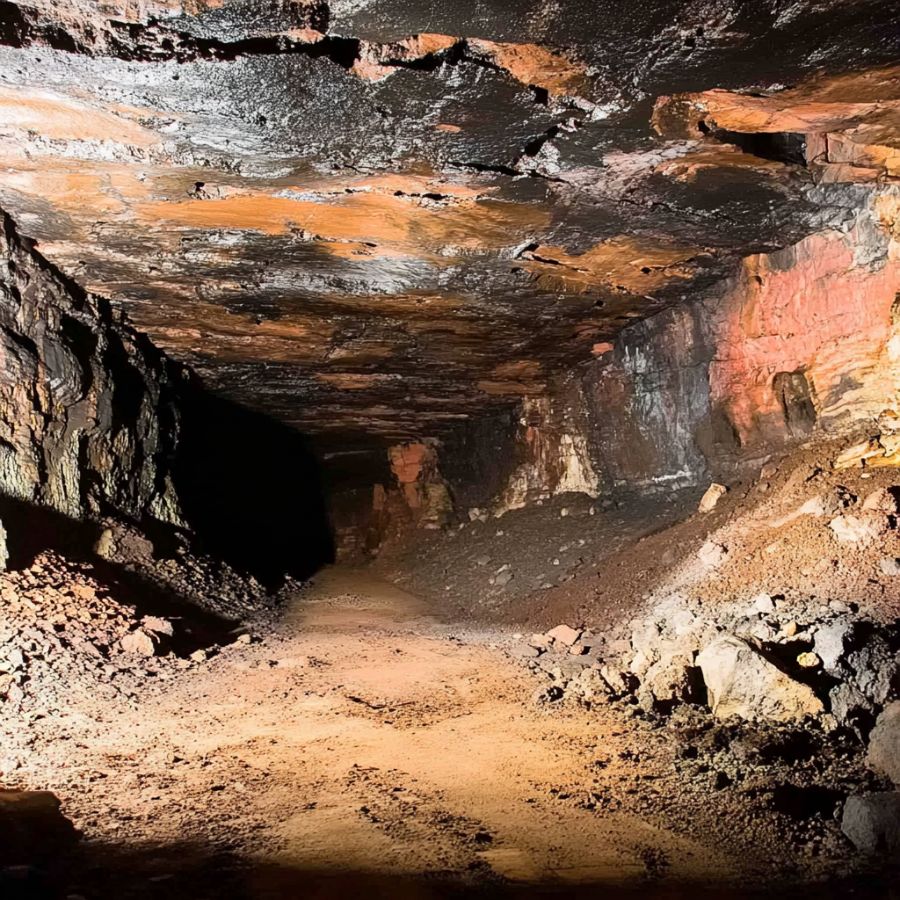
Look for old abandoned mines. These spots often have citrine deposits. Check if there’s any volcanic activity history in the area – that’s a good sign.
Most mining sites have quartz deposits, and since citrine is a type of quartz, you might get lucky.
Granite Outcrops
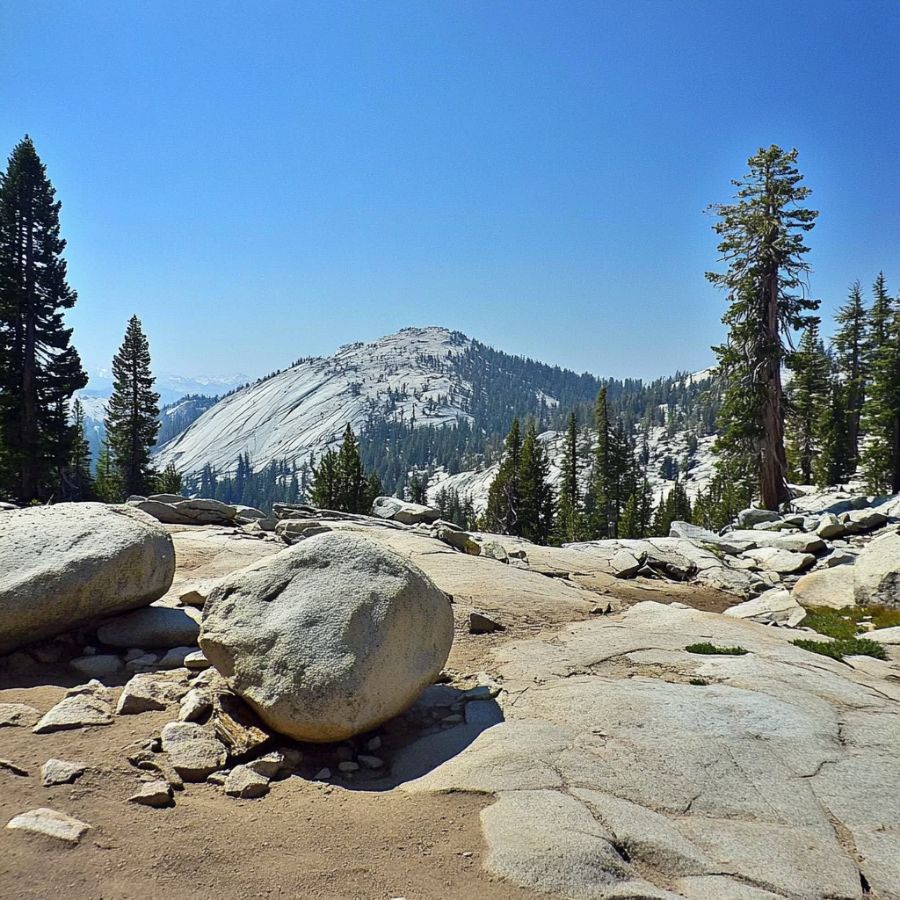
Granite areas are your best bet. These rocks often contain citrine in their cavities and cracks.
While exploring, pay special attention to areas where the rock appears more weathered or broken, as these spots tend to reveal hidden crystal pockets more easily.
Stream Beds

Check stream beds after heavy rains. The water washes down minerals from higher ground.
Look for areas where water slows down – that’s where heavier minerals settle. Use a pan or sieve to sort through gravel. The sparkly yellow stuff could be citrine.
Pegmatite Zones

These coarse-grained rocks often house citrine. Look for white, pink, or gray bands in rock faces. These bands usually indicate pegmatite presence. Break open rocks carefully – citrine might be hiding inside.
Some Great Places To Start
Here are some of the better places in the state to start looking for citrine:
Always Confirm Access and Collection Rules!
Before heading out to any of the locations on our list you need to confirm access requirements and collection rules for both public and private locations directly with the location. We haven’t personally verified every location and the access requirements and collection rules often change without notice.
Many of the locations we mention will not allow collecting but are still great places for those who love to find beautiful rocks and minerals in the wild without keeping them. We also can’t guarantee you will find anything in these locations since they are constantly changing.
Always get updated information directly from the source ahead of time to ensure responsible rockhounding. If you want even more current options it’s always a good idea to contact local rock and mineral clubs and groups
Alpine
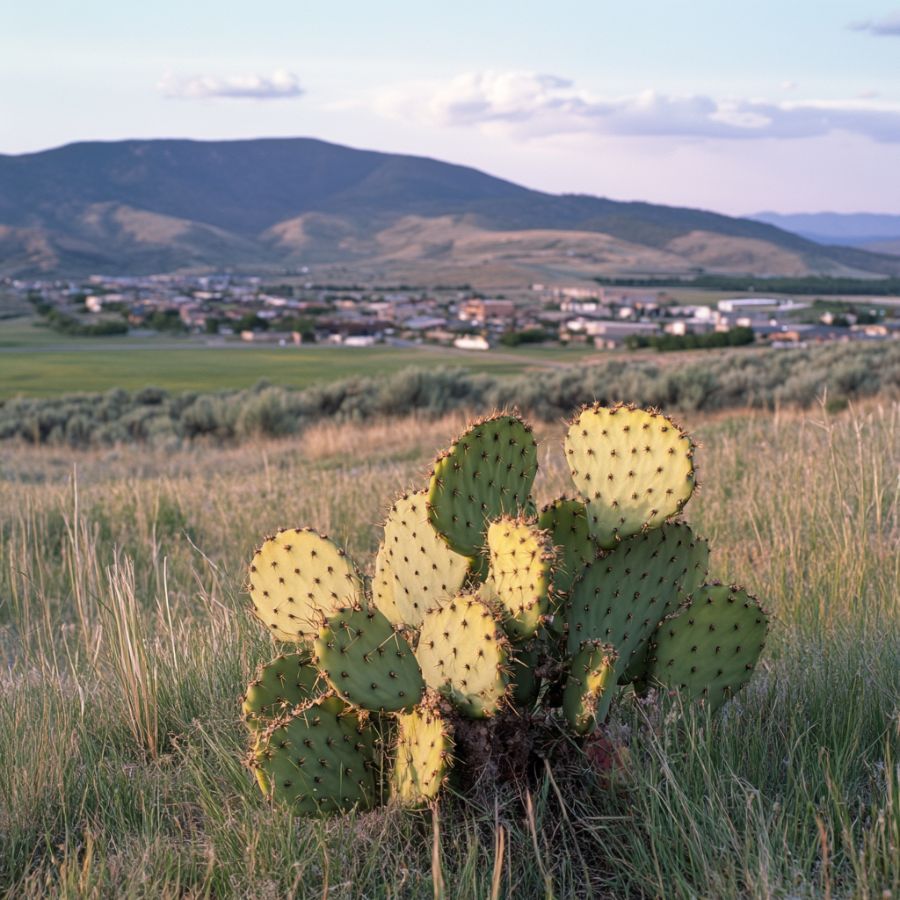
The rugged terrain around Alpine is known for its potential to reveal hidden gemstones, including citrine. With its mix of rugged outcrops and dry creek beds, this area offers plenty of spots to explore.
Sometimes, citrine can be found on gravelly slopes or eroded hillsides near Alpine. After a good rain, loose pieces might be easier to spot as the water washes away dirt and dust.
For the best results, head out early when the sunlight makes it easier to see the stone’s golden sparkle. A sturdy digging tool and a small hand rake can help uncover pieces hidden beneath the soil.
You've probably walked past some incredible rocks and minerals. You need this guide 👇👇👇
We've all come across a cool rock that we could have sworn was rare or valuable but couldn't tell what it was.
If you're not 100% confident that you know every rock and mineral in Texas this guide is for you.
The Texas Rocks & Minerals Field Guide helps you ID what you find in seconds, from Hill Country agates to Llano granite, with crisp photos, simple charts, and zero fluff.
→ Grab your copy today and spot your next gem before anyone else does.
What this guide unlocks:
🧭 Confidence in the field — ID rocks fast and move on to the next find
🎒 Lightweight and waterproof — built for trails, not coffee tables
🌅 Weekend adventures — find treasures on rivers, ranches, and roadsides
🤠 Texas pride — explore the real geological beauty of your state
🔥 Motivation — every trip outside feels like a hunt for hidden gems
Althaus Ranch Road Area
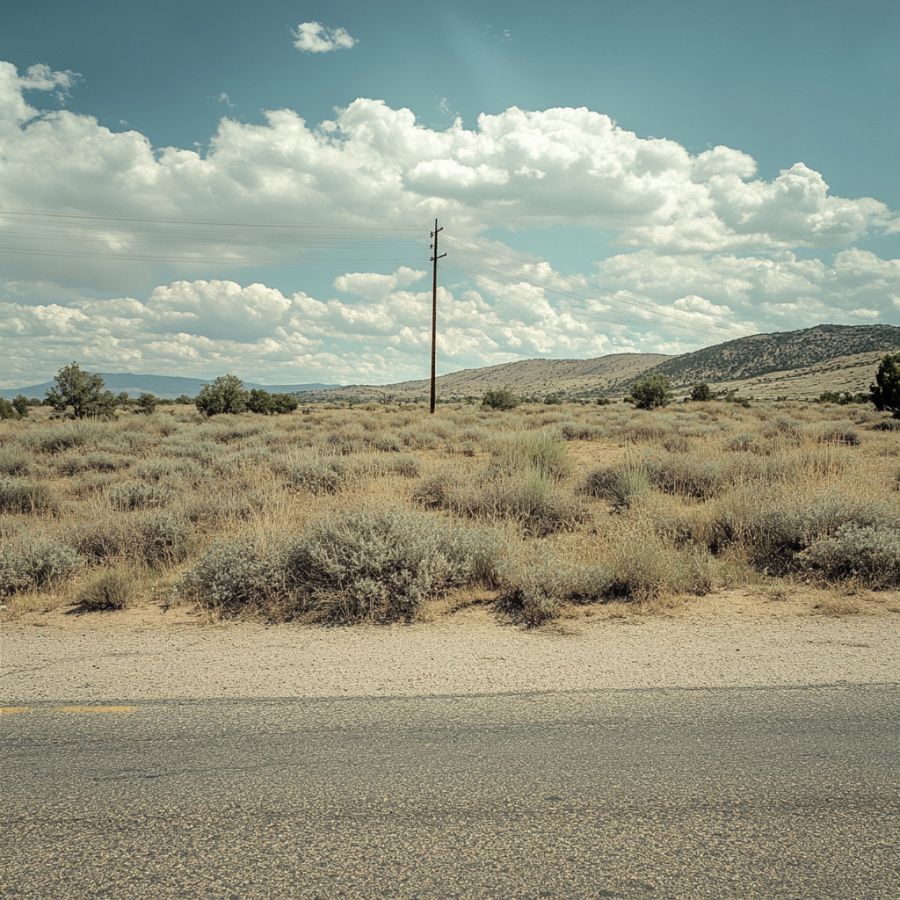
The area around Althaus Ranch Road, near the Pedernales River, is well-known for its rocky terrain that can yield citrine. The most productive spots are the dry, open ground and weathered slopes along the road
Search for citrine in sunny areas where erosion has uncovered rocks and minerals. Late afternoon is a great time to look, as the angled sunlight can make the golden stones easier to see.
Bring a small hand rake or brush to help sift through the rocky soil more quickly. Focus on spots with loose dirt and rocks, as citrine is often found in these weathered areas rather than stuck in solid formations.

